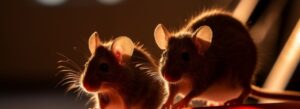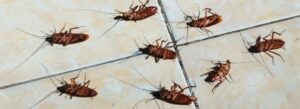Hornets may look like oversized wasps, but their sting and behaviour set them apart in dangerous ways. In this extended guide, we go beyond the basics to look at hornet sting risks, their impact on pollinators like honey bees and bumblebees, and what makes their venom so potent.
Innovation Pest Control has years of experience in dealing with aggressive insects across Kent, including the formidable European hornet and rare sightings of the Asian giant hornet. Here’s what you need to know.
Hornets and Their Place in Nature
Hornets are part of the Hymenoptera order, which includes bees, wasps, ants, and sawflies. As invertebrates, hornets serve a role in the ecosystem—primarily as predators—but their presence near humans can become a significant health threat.
Hornets engage in predation of other insects like spiders, moths, hoverflies, and even beetles. In doing so, they control some pest populations. However, they also target honey bees and bumblebees, raiding beehives for larvae, honey, and protein-rich eggs. This behaviour can devastate colonies of native species, including the western honey bee, which is already in decline.
Hornets vs Pollinators
The presence of hornets can be catastrophic to pollinator populations. The Asian giant hornet, native to East Asia, has earned the nickname “murder hornet” for its aggressive attacks on honey bee hives, which it can decimate in hours. While not widespread in the UK, even small populations can impact beekeeping and wildlife habitats.
The British Beekeepers Association and National Bee Unit actively monitor hornet sightings to protect both wild and managed hives. A hornet raid not only disrupts pollination, but also results in the loss of honey, pollen, and future generations of bees.
Anatomy of a Hornet Sting
Hornets sting using a stinger located at the rear of their abdomen. This stinger injects venom that contains high levels of acetylcholine, causing intense pain, along with histamine and saliva-based enzymes that amplify inflammation.
Whereas a bee sting usually leaves behind the stinger and kills the bee, hornets can sting repeatedly without harm to themselves. Their venom’s toxicity can cause local pain, skin swelling, and serious reactions including anaphylaxis.
A hornet’s body is segmented into:
- Head (with large eyes and mandibles)
- Thorax (connecting the wings and legs)
- Abdomen (housing the stinger and venom sacs)
Understanding this anatomy helps explain why hornets are so effective in self-defence and predation.
Why Do Hornets Attack Humans?
While not aggressive without cause, hornets will fiercely defend their nest. The release of an alarm pheromone can signal all hornets in the colony to attack. This means disturbing a nest hidden in an oak tree, roof void, or under decking can result in multiple stings in seconds.
Hornets may also sting when they feel threatened by:
- Loud noises (lawnmowers, power tools)
- Vibrations (knocking on walls)
- Sudden changes in temperature near the nest
Common nesting sites include:
- Behind fascia boards
- Inside wall cavities
- Among bark or trees (especially oak and sap-covered areas)
- Abandoned plant pots, compost heaps, and garden sheds
Secondary Insect Risks and Co-Infestations
Where hornets are active, you may also find:
- Spiders nesting in corners of sheds and lofts
- Moths attracted to light and warmth
- Mosquitoes breeding in water but taking shelter in quiet loft areas
- Hoverflies mimicking wasps but harmless to humans
- Dragonflies and paper wasps in nearby foliage
Hornets don’t live in isolation. Our team at Innovation Pest Control is trained to identify cross-species infestations, ensuring health, hygiene, and safety are fully restored.
Myths Debunked: Soap, Sap, and Repellents
Some online forums recommend soap sprays, sap traps, or even insect repellent designed for mosquitoes to deter hornets. These rarely work.
Hornets are not attracted by the same cues as flies or midges. Strong-smelling perfumes, fruits, nectar-rich flowers, or spilled honey are more likely to bring them close. In some cases, exposed skin covered in salty sweat may also draw them in.
We advise against experimenting with homemade solutions. Call us for professional, branded protection—we don’t use off-the-shelf methods from brands like Rentokil Initial. We use Innovation-tested treatments with a proven track record in Kent.
Monitoring Hornets in the UK
We collaborate with regional pest monitoring networks and follow alerts from the National Bee Unit, especially concerning Asian hornet threats. Whether you’re in Ashford, Maidstone, Somerset, or further afield, our team keeps up with the latest species reports, emerging behaviours, and habitat shifts.
Final Thoughts: Coexisting or Controlling?
Hornets are part of our wildlife, but when they move into human spaces, it’s no longer safe or sustainable to ignore them. If you’re seeing unusually large insects near your flowers, fruit trees, or roofline—don’t wait.
✅ Call Innovation Pest Control for fast, safe, and fully insured hornet removal.
✅ Serving Kent towns from Ashford to Tenterden, Faversham, Tonbridge, and beyond.
✅ Protect your family, pets, and pollinators.
We don’t just remove pests—we restore peace of mind.
Innovation Pest Control – Trusted. Local. Professional.
📞 Call: 0773958655 📧 Email: enquiries@innovationpestcontrol.co.uk 🌐 Visit: innovationpestcontrol.co.uk







